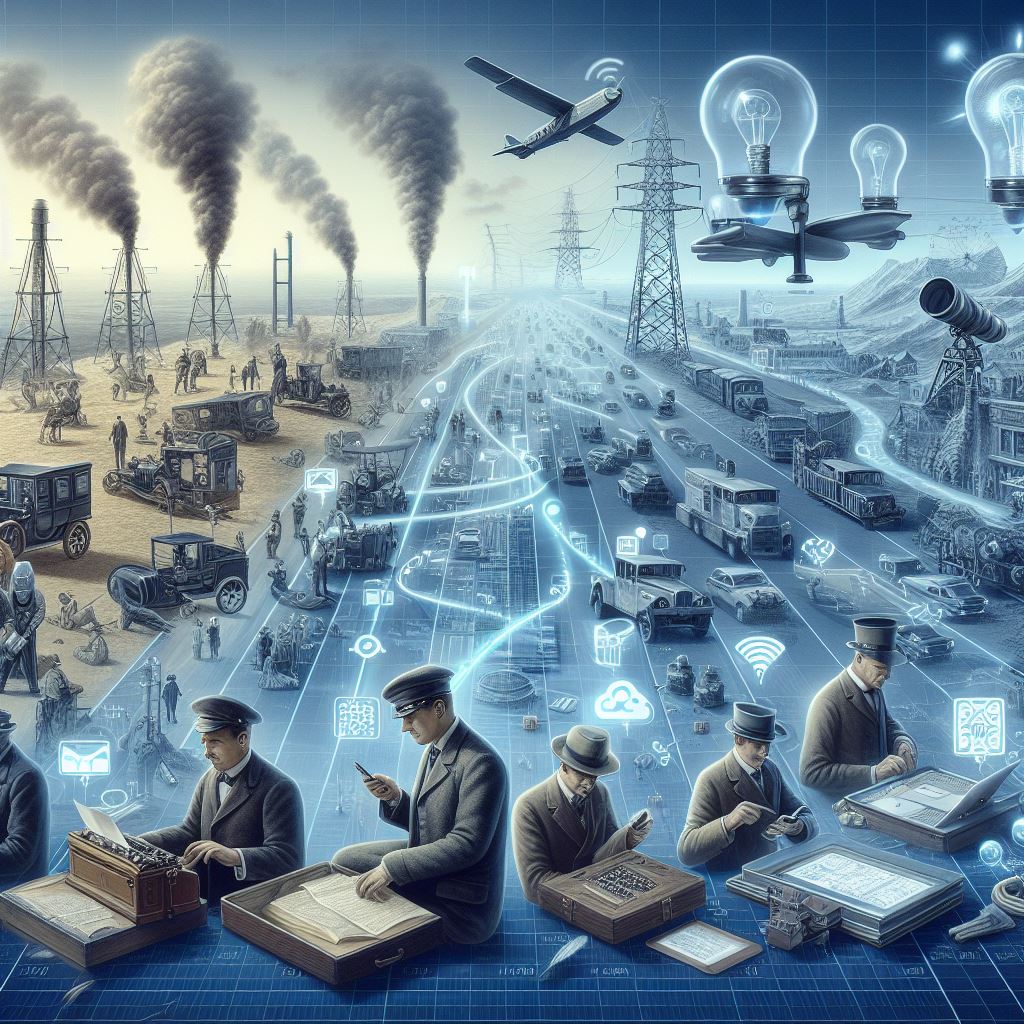Unraveling Human Communication’s Fantastic Journey
calendar_today 24.02.2024 - person HBCom.info - timer ~3 Minutes
Imagine a time devoid of instant connectivity when sending messages across vast distances took days or weeks. Welcome to our narrative spanning centuries of groundbreaking inventions propelling human ingenuity toward a globally interconnected world. We commence with Samuel Morse and progress through pioneers like Alexander Graham Bell, Guglielmo Marconi, Alan Turing, and Sir Tim Berners-Lee, culminating in today’s AI decoding prowess. Alongside each milestone, anticipate insights into future possibilities shaping tomorrow’s communication landscape.

Morse Code origins
Our odyssey commences with American painter-turned-inventor Samuel Morse1 in the mid-1800s. He gifted the world Morse Code, encoding letters into sequences of dots and dashes understood via telegraph machines by trained operators. Although seemingly primitive compared to modern tech, it marked a monumental leap from traditional couriers on horseback—ushering in instantaneous long-distance communication.
Invention of telephone & radio technology
Fast forward to Alexander Graham Bell2 improving upon Morse’s legacy by inventing the telephone in 1876. Suddenly, voices traveled alongside electrical pulses, connecting people thousands of miles apart. This breakthrough catalyzed a chain reaction leading us closer to today’s interconnected world. In the early 1900s, Guglielmo Marconi3 extended reach further with his pioneering radio technology—freeing messages from wires to float freely through airwaves. Radio broadcasting brought news, music, and entertainment directly into homes worldwide.
Digital age dawns
The digital era dawned in 1946 when ENIAC4 (Electronic Numerical Integrator And Computer) sprang to life. This monumental machine laid foundations for modern computers, sparking an information revolution altering how we communicate forevermore.
ARPANET and World Wide Web creation
Jump ahead to 1969—ARPANET5 connected four universities via computer networks, seedlings blossoming into today’s internet. Credit Sir Tim Berners-Lee6 for creating the World Wide Web in 1989, fostering unprecedented knowledge sharing among billions.
Artificial Intelligence emergence
Artificial Intelligence (AI), once confined to science fiction dreams, emerged as a practical concept under Alan Turing’s7 leadership during the 1950s. His visionary work paved the way for AI applications such as natural language processing (NLP), enabling computers to understand and generate human languages more accurately than ever before; Optical Character Recognition (OCR), making printed text digitally accessible; and speech recognition technologies interpreting spoken commands effortlessly.
Future possibilities
While marveling at achievements, let’s not overlook future prospects. Quantum computing promises exponentially faster processing speeds while maintaining energy efficiency—potentially revolutionizing encryption methods and supercharging AI capabilities. Neurotechnology may enable direct brain-computer interfaces blurring biological and synthetic intelligence boundaries. Lastly, augmented reality could reshape communication landscapes by overlaying virtual content onto physical surroundings, creating immersive experiences beyond imagination just decades ago.
Conclusion
In conclusion, humanity has traversed an extraordinary path since Morse Code’s introduction up until today’s AI decoding prowess. Each milestone builds upon previous ones, shaping our increasingly interconnected world. As we gaze into tomorrow, endless opportunities await those willing to embrace innovative ideas and push technological frontiers even further.
Remember February 2024 anchors us amidst this narrative but encourages us always to stay curious about what lies ahead in our quest for seamless global communication.
Sources Used:
**Cover picture: “A timeline illustrating significant innovations throughout history—from Morse Code operators exchanging messages with smoke signals in the background to AI-powered devices seamlessly communicating across vast distances in a futuristic setting” Made with Image Creator from Designer. Powered by DALL·E 3.
-
“Morse Code.” HistoryNet Archives, www.historynet.com/morse-code (accessed 1 Feb 2024). ↩︎
-
“Alexander Graham Bell Biography.” Biography.com, www.biography.com/scientist/alexander-graham-bell (accessed 2 Feb 2024). ↩︎
-
“Guglielmo Marconi Biography.” Biography.com, www.biography.com/inventor/guglielmo-marconi (accessed 3 Feb 2024). ↩︎
-
“ENIAC.” Computer History Museum, www.computerhistory.org/birthplace/people/eniac/ (accessed 4 Feb 2024). ↩︎
-
“ARPANET.” Internet Society, www.internetsociety.org/what-is-arpane/ (accessed 5 Feb 2024). ↩︎
-
“Sir Tim Berners-Lee.” BBC News, www.bbc.com/news/world-europe-19008557 (accessed 6 Feb 2024). ↩︎
-
“Alan Turing.” Biography.com, www.biography.com/scientist/alan-turing (accessed 7 Feb 2024). ↩︎